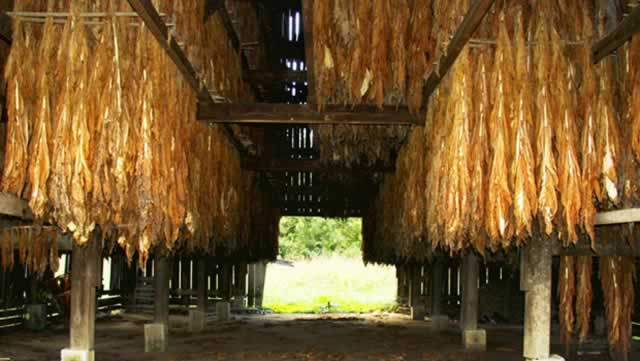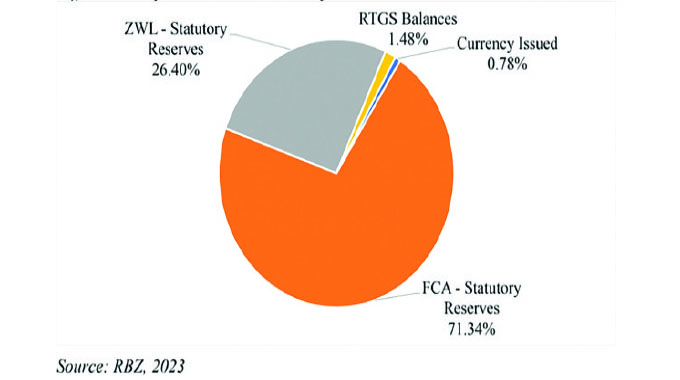Tobacco curing: Woodlots the answer

 Jeffrey Gogo Climate Story
Jeffrey Gogo Climate Story
MOSES Masikati, 41, a small-scale contract tobacco grower from Willows resettlement near Tandi village in Makoni district, Rusape, early this year made the first harvest of timber from his one hectare of eucalyptus (or gum tree) planted in 2007.
The timber helped build new tobacco barns, but more importantly, was used as fuel in curing the leaf, marking a crucial departure from Masikati’s erstwhile damaging reliance on indigenous forests for firewood.
As prospects for rich pickings continue to magnetise tens of thousands of small growers to tobacco, Zimbabwe’s natural woodlands have come under serious pressure, causing massive deforestation that exacerbates existing climate risks.
“With timber from the woodlot, my demand for firewood from the surrounding natural forests has diminished, substantially,” said Masikati, who has produced 15 to 20 bales of flue-cured tobacco each year since he started growing the crop in 2007.
“The harvest this year was from those trees planted early. However, in the near future, I hope to have become completely independent, using only wood from my plantation for curing.”
Between 2007 and 2008, Masikati planted at his plot about 2 500 gum trees on small pieces of detached lands that measure up to a hectare.
However, the survival rate is much lower. Only 1 700 trees remain standing due to “the high frequency of veld fires and animal damage.
“Outside this, the trees have experienced good growth,” said the farmer, whose highest earnings so far reached US$12 000.
Masikati represents one of the few counter attack measures by the Forestry Commission specifically designed to curb deforestation from tobacco related activities.
The Tobacco Wood Energy Programme was started in 2005 with willing smallholder farmers in Mashonaland East and Manicaland, Violet Makoto, spokersperson for the Commission, the country’s forests regulator, said.
“These were the pilot projects where we encouraged farmers to set aside a piece of their farming land and establish a woodlot of fast growing species of trees that they can harvest earlier for curing purposes,” Makoto said by email.
“Farmers involved in the pilot phase of the programme have already started utilising wood from their own woodlots and just in time too because now it is part of a Statutory Instrument that came into effect in June last year.”
Those regulations aim to control the use, trade and movement of firewood and timber and other forest produce in Zimbabwe and forces farmers to plant a hectare of gum trees for every 10ha under tobacco.
Depending on one’s measurement of success, Masikati can be argued to be that example in view of other farmers’ complete reluctance to turn to gum.
However, until he fully weans himself from indigenous woods, the Rusape farmer remains a half-success and so does the Commission’s project.
The Commission and other tobacco stakeholders should get all smallholder growers to commit to eucalyptus, from own plantations.
Delivering the key note speech during Zimbabwe’s Independence Day celebrations in Harare on April 18, President Mugabe warned tobacco farmers against deforestation.
“If you are going to be cutting trees because you growing tobacco then we will stop you from growing tobacco,” he charged.
This should be the cue for the tobacco industry to ensure that those growing the crop should do so in a manner that is profitable, both to the natural environment and their pockets.
Tobacco earned Zimbabwe US$632 million in exports last year, the country expects those earnings to multiply this year and in the future, but the processes that produce the crop have deep environmental damage, threatening the ecological balance.
Ninety percent of the 90 000 farmers who registered to grow tobacco with the Tobacco Industry and Marketing Board (TIMB) last farming season are small-scale or communal who depend on fuel-wood for tobacco curing.
That wood is usually obtained by the indiscriminate mowing down of natural forests. Yearly, 49 500 hectares of forests are lost to tobacco production, Mokoto tells me.
“Flue-cured tobacco production consumes substantial amounts of wood.
“The destruction commences at land clearing for tobacco farming where virgin land is involved, harvesting of poles and sticks for barn construction right up to the curing process itself,” she said by email.
Depending on forest type, say Mopani, the hardwood seasonal habitat of the local delicacy madora (edible caterpillar), a hectare’s illegal harvest by the farmers could result in the loss of between 8 000 and 10 000 trees due to their dense natural distribution, according to research by The Herald Business.
By comparison, the carefully spaced eucalyptus plantation will hold anything between 1 200 and 2 000 trees per hectare.
This means the loss of natural forests or trees such as Mopani, the Miombo woodlands, among others, the predominant forest-type in the major tobacco growing regions of Mashonaland West and East and Manicaland, may actually be higher than originally thought, red flagging the urgency of corrective action.
Forests are crucial to climate change mitigation, as they remove from the atmosphere carbon dioxide, the most potent greenhouse gas fuelling global warming and climate change.
Yet, deforestation and forest degradation are a huge source of greenhouse gases, contributing 19 percent of all emissions world, much higher than the transportation sector at 15 percent, according to the UN’s expert panel on climate change.
With tobacco curing, 9kg of wood will be required to cure a kg of tobacco, Dr Dahlia Garwe, chief executive of the Tobacco Research Board said in an interview last year.
That is, for every half hectare with tobacco production of 600kg, 60 full grown trees must be cut, according to a presentation by the Agriculture Ministry at a forest workshop in Harare on March 7 this year.
Masikati, who religiously grows a hectare, said he needed 30 full-load scotch-carts to cure his crop.
The cart carries between 400 to 550kg of firewood.
Interestingly, he said he only cuts about 9 musasa or munondo trees for all that wood.
Zimbabwe is the world’s fourth largest producer of flue-cured tobacco, after China, Brazil and the United States of America.
“At this rate (of deforestation), the country may, in the short to medium term, end up failing to produce flue-cured tobacco owing to shortage of firewood for tobacco curing purposes.
“It should also be remembered that trees are not there solely for the provision of firewood for tobacco curing as they serve many other environmental, social and economic functions,” said Makoto.
God is faithful.








Comments